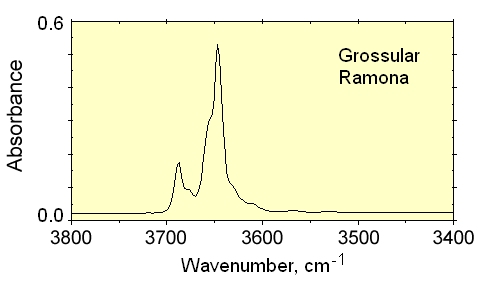Neutron-diffraction structure of a
low-water grossular at 20 K
G. A.
Lager
Department of Geology
University of Louisville, Louisville, Kentucky 40292, USA
G. R. Rossman
Division of Geological and Planetary Sciences
California Institute of Technology, Pasadena, CA 91125, USA
F. J. Rotella
IPNS Division, Argonne National Laboratory
Argonne, Illinois 60439, USA
A.J. Schultz
Chemistry and Materials Science Divisions
Argonne National Laboratory
Argonne, Illinois 60439, USA
Abstract
The crystal structure of a low-water (0.16 wt% OH) grossular has been
refined at 20 K by single-crystal time-of-flight neutron-diffraction
methods. Comparisons with the room-temperature structure indicate that
between 298 and 20 K, the silicate te trahedron undergoes a small
rigid-body rotation that results in an increase in the y parameter of
oxygen. The mechanism of thermal expansion is significantly different
from that at high temperture where the tetrahedra do not rotate and
changes in the structure reflect only unit-cell expansion.

The crystal before fabrication

Infrared spectrum in the OH region of the grossular from Ramona, California, normalized to 0.10 mm thickness
The IR data (text file)


